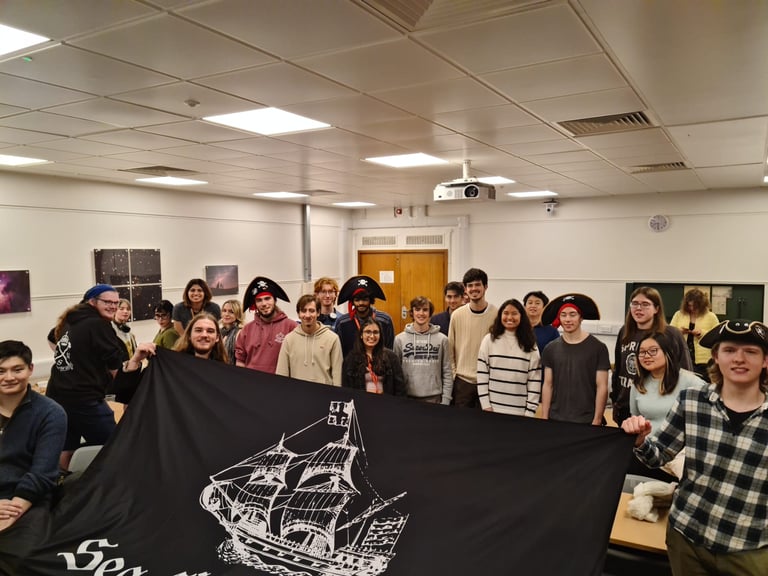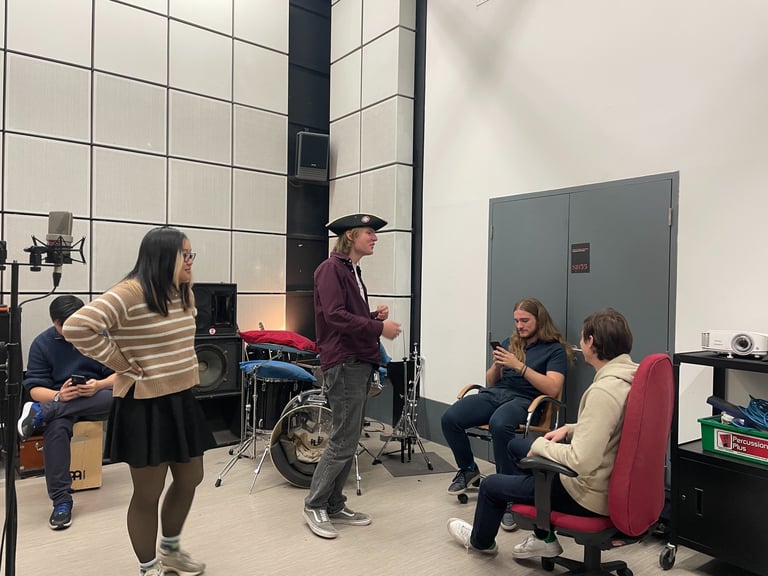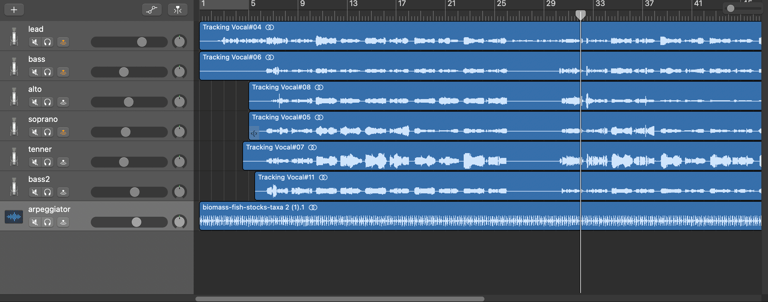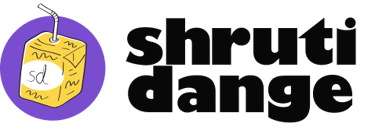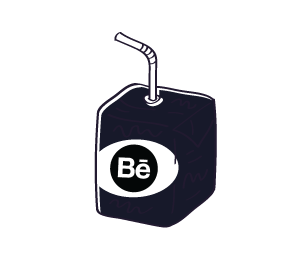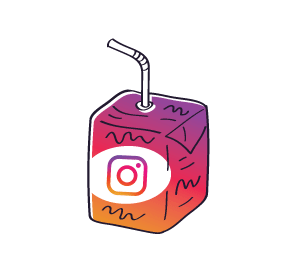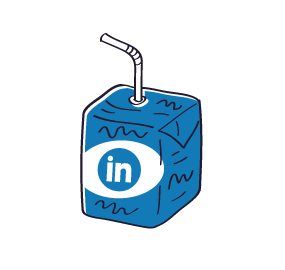AI-aided design research and data sonification
Empty Seas and Empty Nets is a folk-pop sea shanty that outlines ‘overfishing’ from the point of view of a fish by describing the loss of a ritualistic practice as a direct result of a change in the ecological landscape.
Timeline: 2 months
Role: Design research, traduction, storytelling, music production
Tools: Field research, AI, Adobe Audition
the goal -
The Sea Shanty is a thought-provoking piece in response to the claims made by marine ecologist Boris Worm that “if current fishing trends continue, we will see empty oceans by 2048”; which begs the question, ‘Are there plenty of fish in the sea?’. Therefore, this project aims to encourage general youth (12-35yrs), disconnected from the oceans, to shift their perspective from a human to a non-human viewpoint to generate awareness and empathy around this alarming issue.
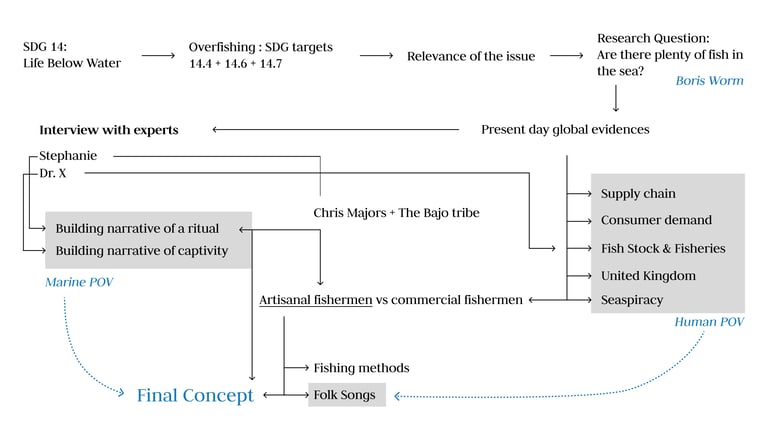

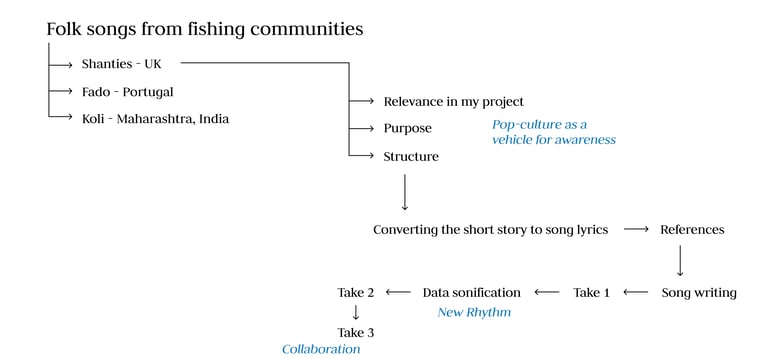

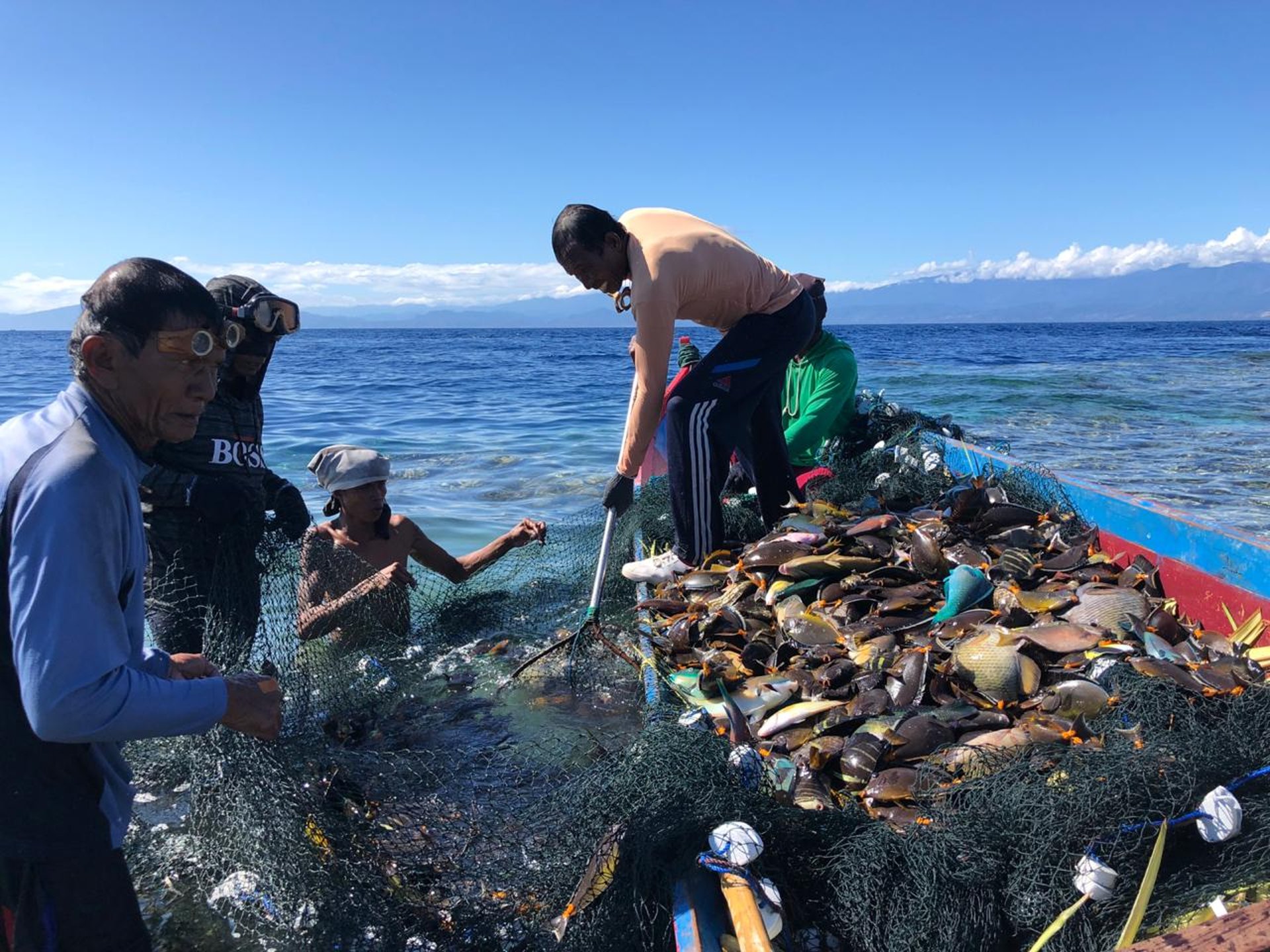
Qualitative Research.
To understand the complexities of the overfishing issue, I conducted interviews with marine experts.
Stephanie Garvin:
Stephanie is an Irish Permaculture designer and teacher and spent a significant amount of time at the Togean Conservation Foundation. She shed light on sustainable vs economic fishing practices and the direct effects of overfishing on coastal communities over 2 decades. Along with anecdotal stories, she also cited two documents put together by Chris Majors, a member of the Bajo tribe, that talk about the harmonious living and Indigenous ideologies, beliefs, and rituals of coastal people.
Sama Baiau belief:
• Take what's available to feed yourselves, the oceans are for everyone to exploit
• Move around to allow oceans to replenish instead of plundering the same area > Nomadic lifestyles allowed for replenishment
Dr. X (wished to remain unnamed):
Dr X, a marine scientist, took a more data-centric approach to his interview responses. He highlighted the interdependence of marine species and the effect of human actions on large predators, who are particularly vulnerable to extinction. He spoke in great depth about the Indian system and also shared that a global approach is impossible in such situations due to differences in cultural understanding of coast dwellers, changing ecology, differences in baselines and benchmarks etc. Rather, he recommends an ecosystem-based fisheries management system located to the geographical area.
Transducing the interviews using AI:
How can the gist of the interviews be expressed to wider audiences?
The interviews were very informative and saturated with numerical data. To simplify and better understand this complex relationship between marine life and human life, I asked AI to write down 2 short stories that summarized the essence of the interview. The interview stressed the benefit of marine ecosystems to humans but I wanted to flip the narrative and bring to light the point of view of the fish. Therefore, both stories have fish protagonists who describe the impact of our actions on their lives.
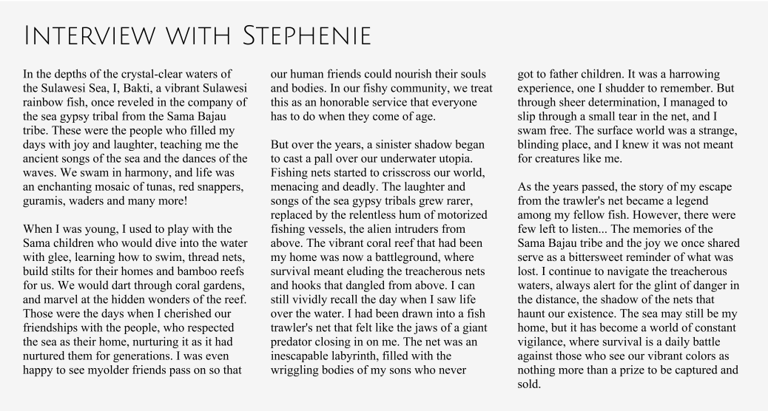

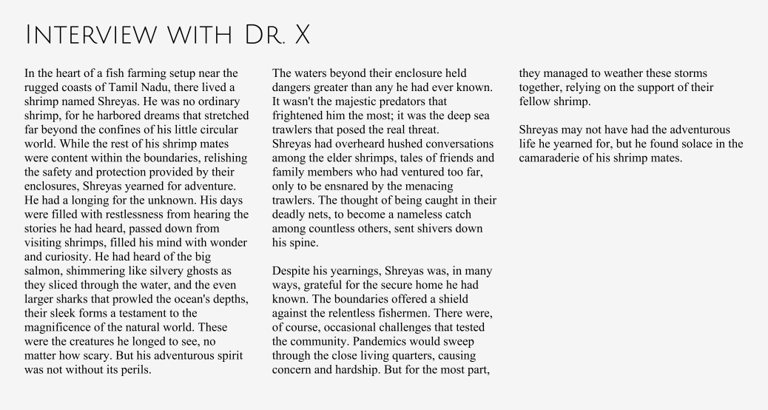

Transducing again -
Why Sea Shanty?
I want to convert the story into song lyrics and harness the power of social media to create something that could potentially be a part of the trending reel/TikTok medium. Since sea shanties have blown up in the recent past (Wellerman by Nathan Evans, 2021), I want to use this genre of folk song to convey my message about overfishing. The genre is relevant because of its association with fishermen and merchant boats of the past. It also lends itself beautifully to group singing and participation due to its repetitive rhythmic beats.
What better way to invoke global dialogue on overfishing than by using the songs of the fishermen?
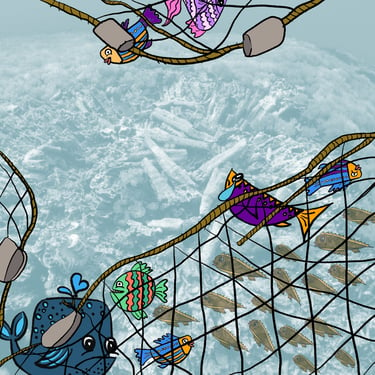
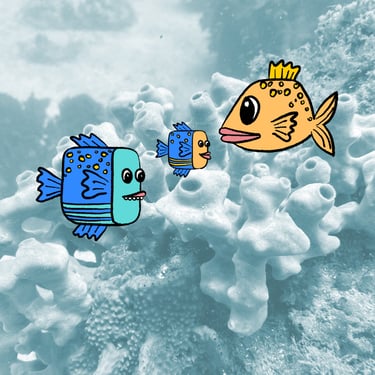
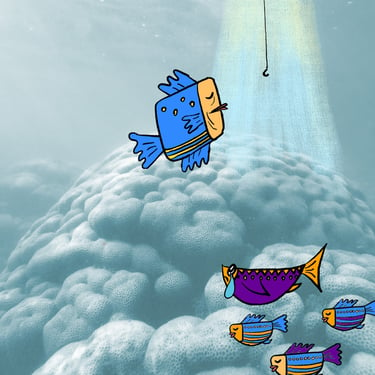
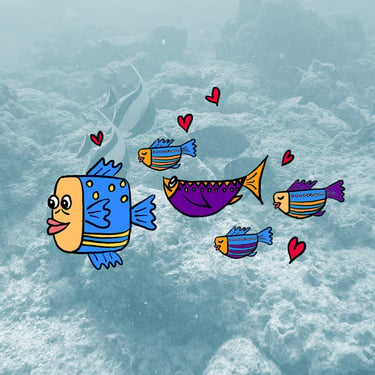
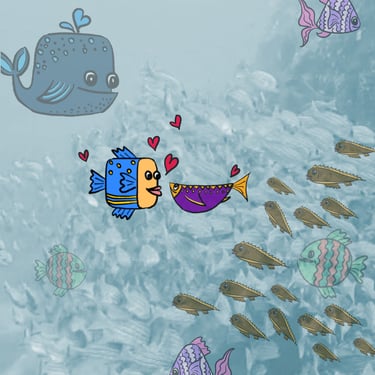
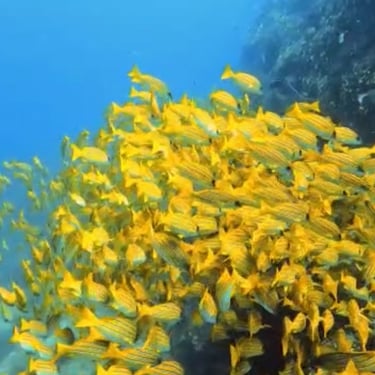
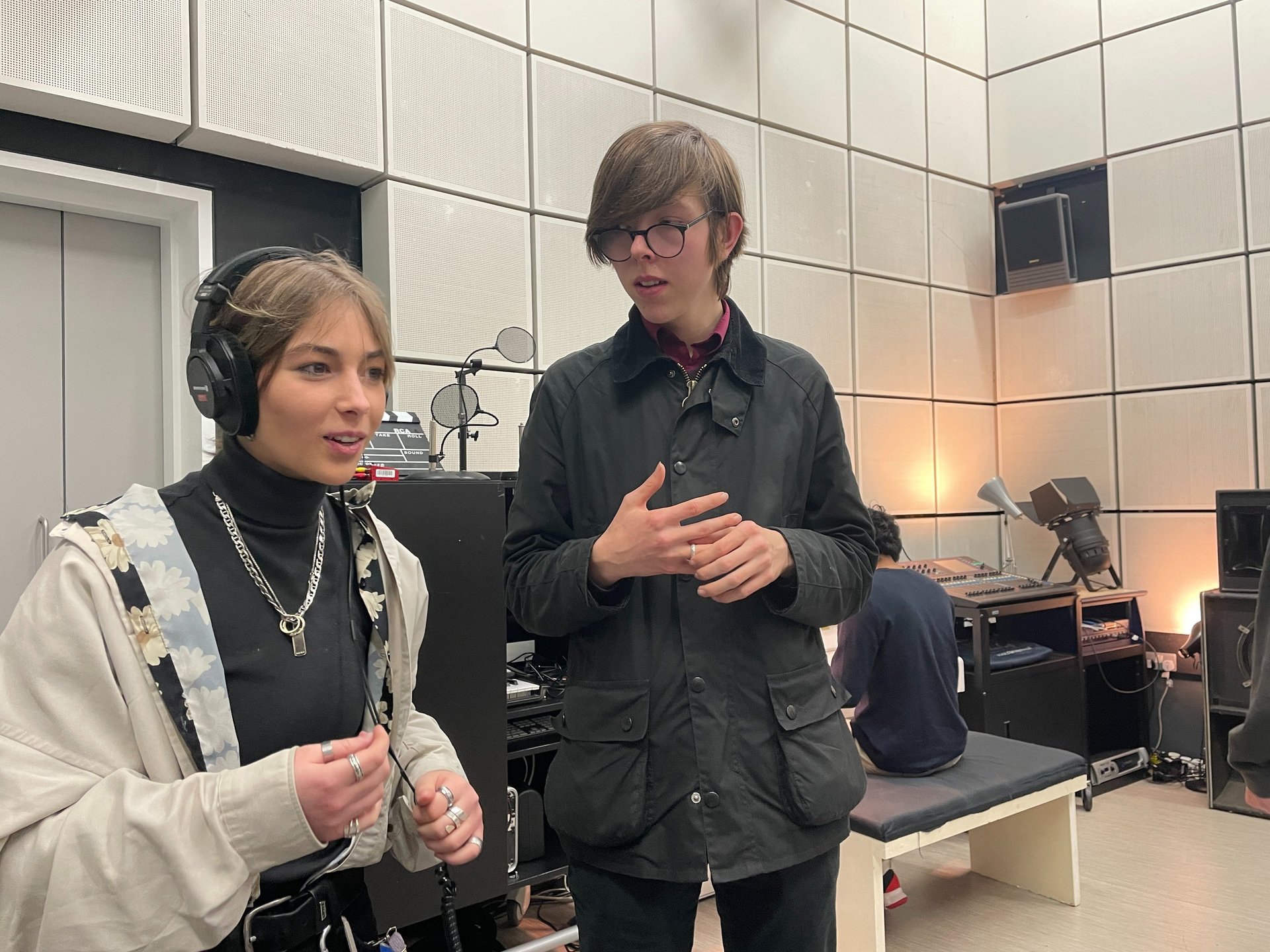
Music generation.
The dataset provides aggregated data on fish biomass, fishing pressure and catches by region and taxa, based on the results of the RAM Legacy Stock Assessment Database.
Using numerical data of metric tonnes of biomass of different fish species and assigning them to a corresponding note on the C# Minor scale. The higher numerical values (1970) were assigned to higher notes and lower values (2018) were assigned to lower notes. So as the sound progresses, it continues to get lower and gloomier. I also chose the minor scale to match the sad mood of the funeral ritual narrated in the story.
DATA > SOUND
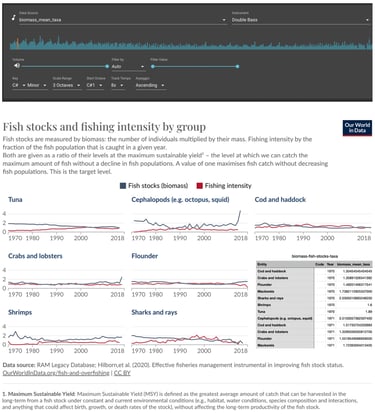

Recording with The Imperial Sea Shanty Society -
